#Grand Duchess Maria Mikhailovna
Text

The daughters of Grand Duke Mikhail Pavlovich of Russia by Brünnich.
#grand duchess maria mikhailovna#grand duchess elizaveta mikhailovna#grand duchess ekaterina mikhailovna#romanov#russia#brunnich#portrait
139 notes
·
View notes
Text

A beautiful drawing showing Grand Duchesses Catherine (Ekaterina) Mikhailovna and Maria Mikhailovna c. 1837.
#grand duchess maria mikhailovna#maria mikhailovna#catherine mikhailovna#ekaterina mikhailovna#grand duchess catherine mikhailovna#1830s#19th century#historical fashion#circa 1837#royal portrait#old fashion#drawing#mikhailovichi#romanov#romanovs
26 notes
·
View notes
Photo
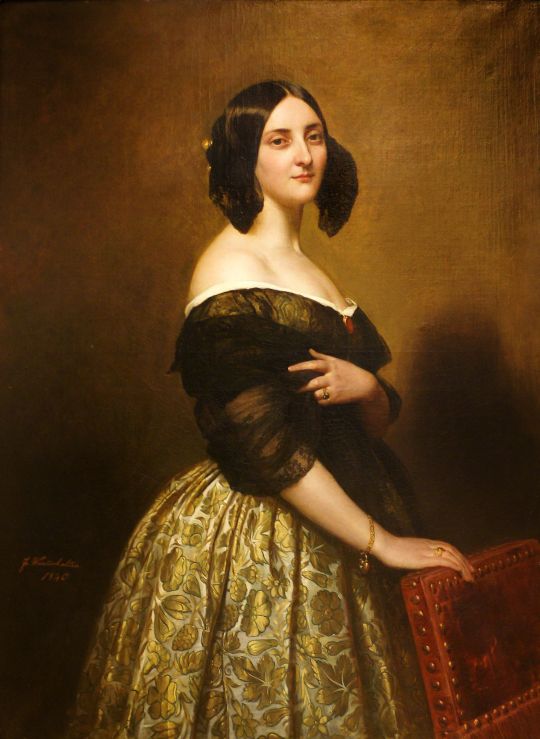



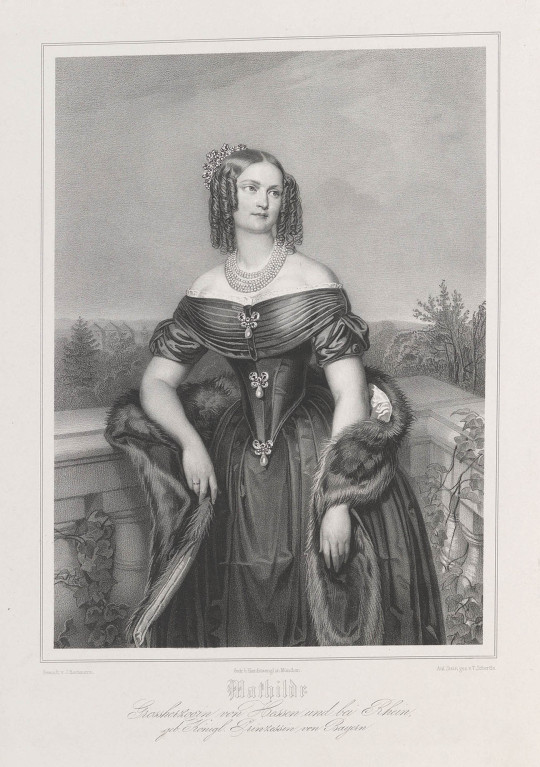
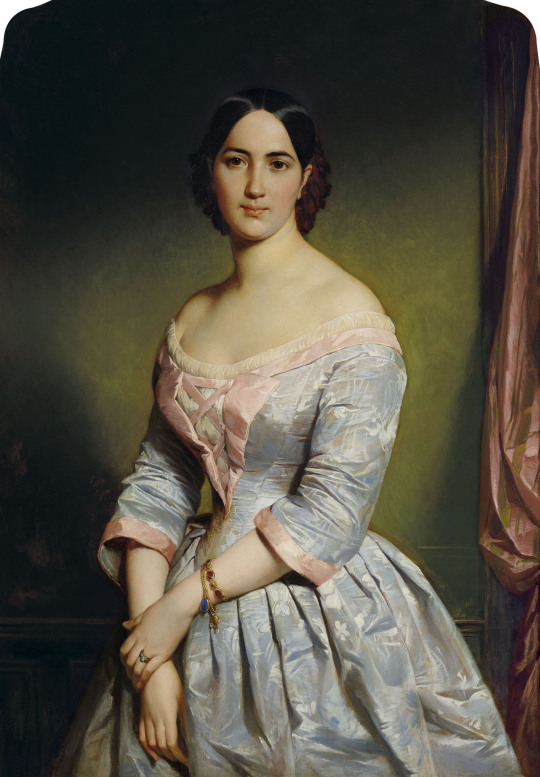
1840s dresses (from top to bottom) -
1840 Marie-Thécle de Monttessuy, Comtessede Nieuwerkerke by Franz Xaver Winterhalter (Landesmuseum Mainz - Mainz, Rheinland-Pfalz, Germany) 2069X2830.
1842 Christine Dieckhoff by Georg Wittemann (location ?). From pinterest.com/pin/366550857185910796/ 878X1200. Coral and also gold jewelry were fashionable.
Grand Duchess Maria Mikhailovna of Russia by ?. From tumblr.com/imperial-russia; fixed tear and some spots w Pshop 1553X2048.
1847 Grand Duchess Alexandra Iosifovna of Russia (née Princess of Saxe-Altenburg) by Hau (location ?). From tumblr.com/roehenstart 943X1220.
ca.1848-1860 Mathilde Caroline of Bavaria, Grand Duchess of Hesse and by Rhine lithograph by Valentin Schertle after Joseph Hartmann (Royal Collection). From Wikimedia 1296X1840.
1849 Anne-Arsene Charton by Édouard-Louis Dubufe (auctioned by Christie's). From Wikimedia; fixed spots & flaws w Pshop 2136X3072.
#1840s fashion#early Victorian fashion#Biedermeier fashion#Romantic era fashion#Louis-Philippe fashion#Marie-Thécle de Monttessuy#Franz Xaver Winterhalter#sheer wrap#Christine Dieckhoff#Georg Wittemann#side braid coiffure#coral jewelry#gold jewelry#chemise#Grand Duchess Maria Mikhailovna#pleated bertha#darts#Grand Duchess Alexandra Iosifovna#contrasting bertha#Mathilde Caroline of Bavaria#Valentin Schertle#Joseph Hartmann#Anne-Arsene Charton#Édouard-Louis Dubufe#lapels#laced bodice
12 notes
·
View notes
Text
𝙲𝚑𝚘𝚌𝚘𝚕𝚊𝚝𝚎 𝚌𝚊𝚛𝚍𝚜 𝚘𝚏 𝚁𝚘𝚢𝚊𝚕 𝚠𝚘𝚖𝚎𝚗 👑✨🍫
(𝙿𝚊𝚛𝚝 𝟺 𝚘𝚞𝚝 𝚘𝚏 𝟺)
~~~~~~~~~~~~~~~~~~~~~~~~~~~~~~~~~~~~~~~~~~~~~~~

Princess Mary, Countess of Harewood and Princess Royal.

Crown Princess Cecilie of Prussia, née Duchess Cecilie of Mecklenburg-Schwerin.
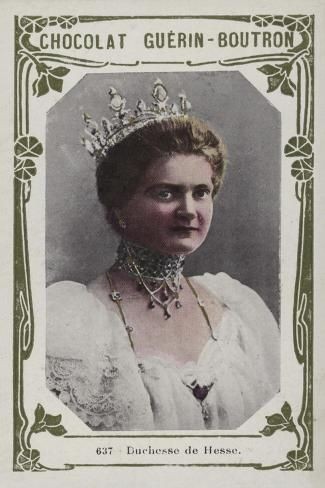
Grand Duchess Eleonore of Hesse, née Princess Eleonore of Solms-Hohensolms-Lich.
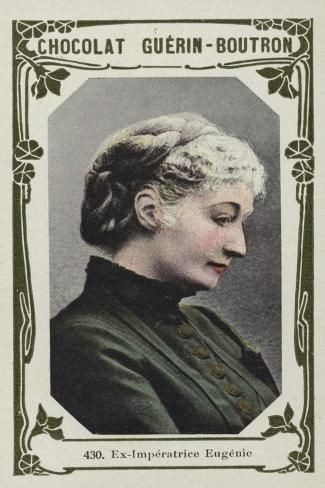
Empress Eugenie of France, née Eugenie de Montijo.
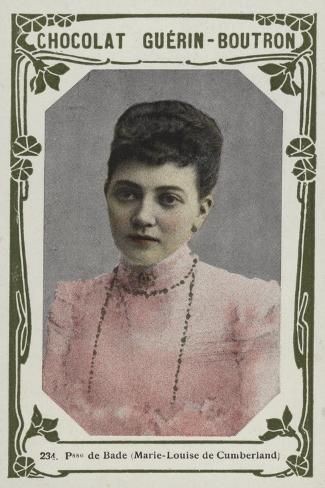
Princess Marie Louise of Baden, née Princess Marie Louise of Hanover.

Grand Duchess Olga Nikolaevna
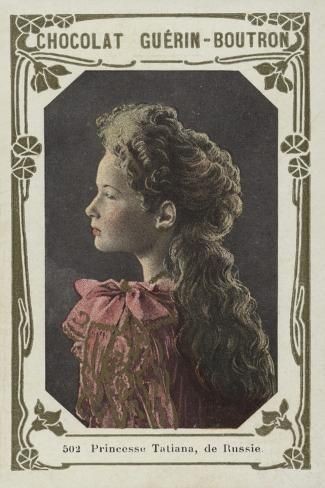
Grand Duchess Tatiana Nikolaevna
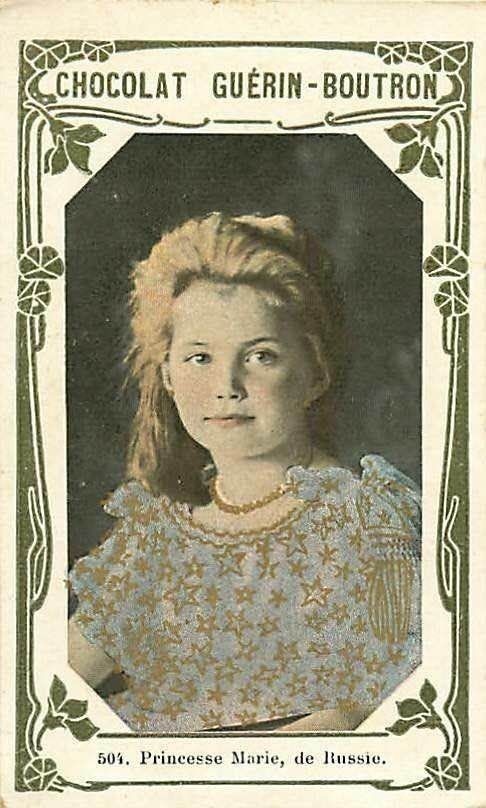
Grand Duchess Maria Nikolaevna
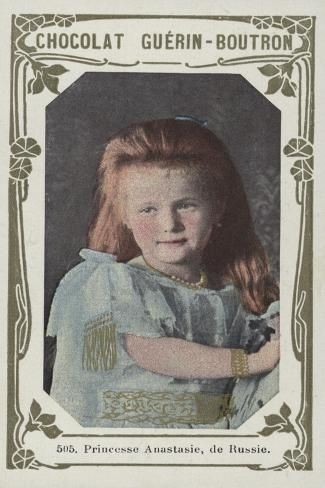
Grand Duchess Anastasia Nikolaevna
#princess mary#mary princess royal#duchess cecilie of mecklenburg-schwerin#crown princess cecilie of prussia#grand duchess eleonore of hesse#princess eleonore of solms-hohensolms-lich#empress eugenie#eugenie de montijo#princess marie louise of hanover#princess marie louise of baden#grand duchess olga nikolaevna#grand duchess tatiana nikolaevna#grand duchess maria nikolaevna#grand duchess anastasia mikhailovna#chocolate cards
7 notes
·
View notes
Text
Portraits of Romanovs (and Relations) by Nicholas Panagiotti Zarokilli
Nicholas Pannagiottis Zarokilli was born in Turkey in 1879. He was a painter particularly fond of creating pictures of beautiful women. From 1912 to 1920, Zarokilli produced paintings for publications like MoToR, Modern Priscilla, Women’s Home Companion, The Green Book, McCall’s, and The Saturday Evening Post.
He also designed World War I posters. The United States needed money for the war, so the artist created posters to try and encourage people to give for the cause.
Zarokilli was known well for his dry-point paintings. Drypoint is a printmaking technique of the intaglio family, in which an image is incised into a plate or "matrix" with a hard-pointed "needle" of sharp metal or diamond point. In principle, the method is practically identical to engraving.
He painted portraits for people such as the Queen of Spain, the Archbishop of Canterbury, Grand Duchess Anastasia, the King of Portugal, and Mr. and Mrs. Solomon Guggenheim. Landscapes were also his love, painting the cities of Venice, Madrid, and Seville.
The following is his rendering of several members of the Romanov family (and other relations.) I have seen some of these here and there before (several of you have them in your Tumblrs and always admired them; I think he captures the likenesses admirably. I found the ones here together and identified on the British Museum website (they were done between 1920 and 1922.)
These are the names of the easily recognizable "personages" in the paintings in the order they appear below:
Prince Felix Yusupof (wearing a suit)
Prince Felix Yusupof (head)
Princess Irina Alexandrovna
Grand Duke Alexander Mikhailovich (sitting)
Grand Duke Alexander Mikhailovich (bust)
Prince Andrei Alexandrovich
Prince Feodor Alexandrovich
Grand Duchess Anastasia Mikhailovna
Grand Duke Kyril Vladimirovich
Grand Duchess Maria Pavlovna the Younger
Queen Marie of Romania (born Princess Marie Alexandra Victoria of Edinburgh) - Granddaughter of Queen Victoria
Queen Victoria Eugenie of Spain (born Princess Victoria Eugenie Julia Ena of Battenberg (youngest granddaughter of Queen Victoria, Hessian Princess through the morganatic Battenberg line)



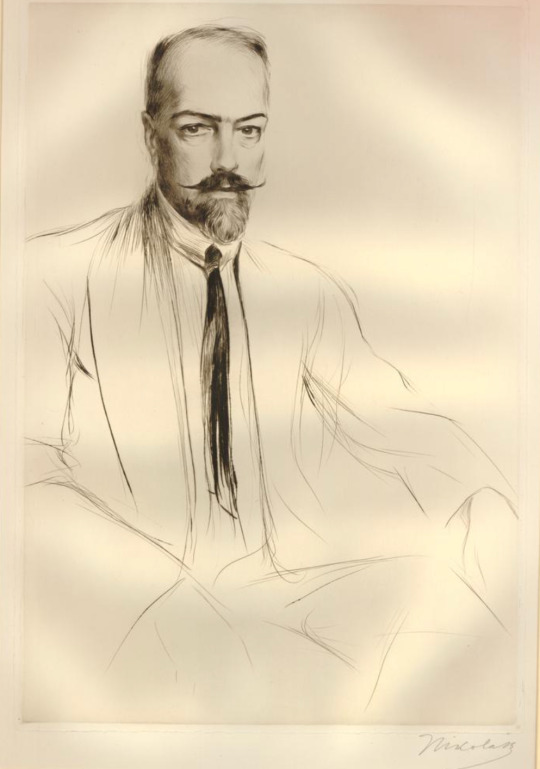
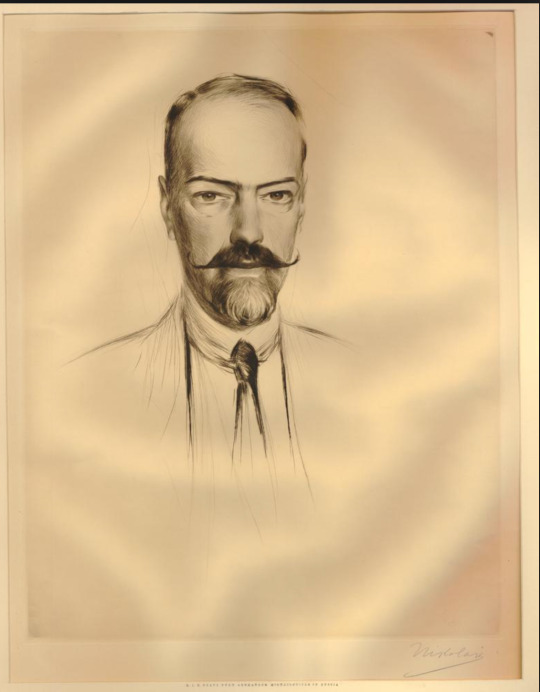

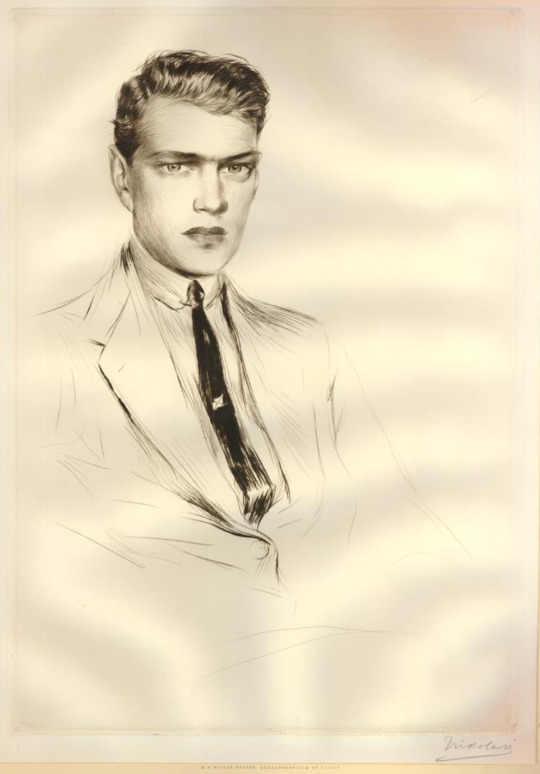


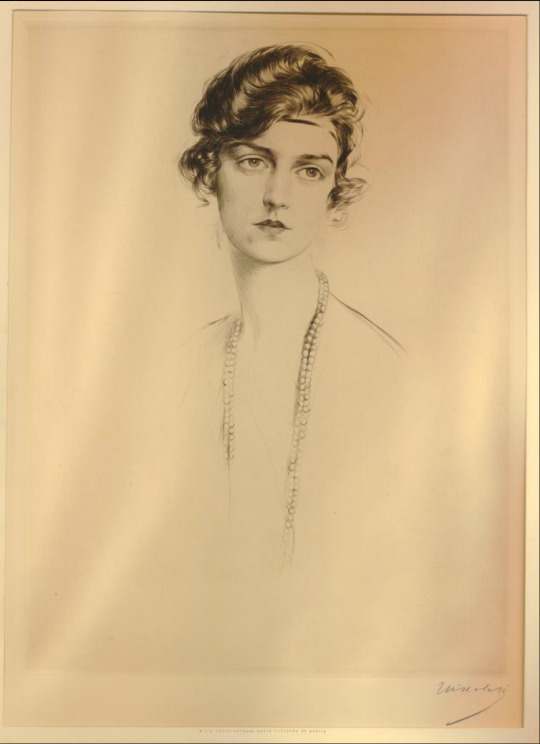

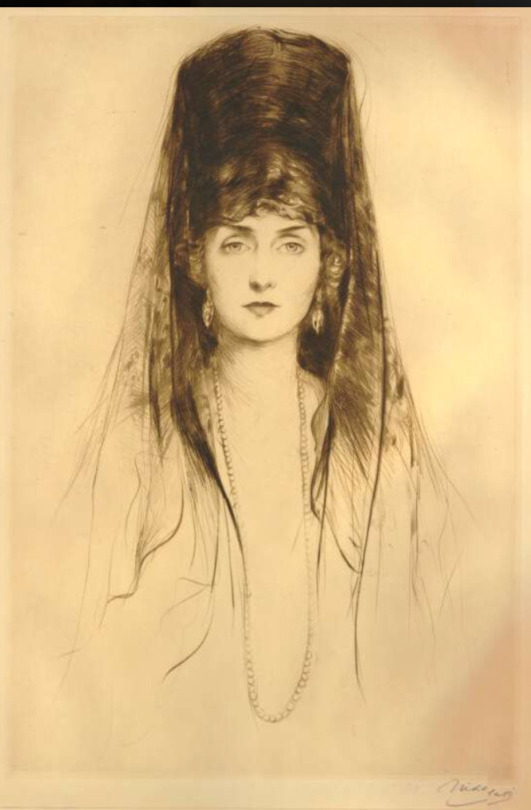
References
N.P. Zarokilli Archives | The Saturday Evening Post
Nicholas Panagiotti Zarokilli | British Museum
#Nicholas Panagiotti Zarokilli#Prince Felix Yusupov#Princess Irina Yusupov#Grand Duke Alexander Mikhailovich#Grand Duchess Anastasia Mikhailovna#Prince Andrei Alexandrovich#Prince Feodor Alexandrovich#Grand Duke Kyril Vladimirovich#Grand Duchess Maria Pavlovna the Younger#Queen Marie of Romania#Queen Victoria Eugenia of Spain#Romanov dynasty
36 notes
·
View notes
Text
OTMA's personalities according to Colonel Evgeny Stepanovich Kobylinsky
Kobylinsky is a fascinating inividual, here is a short summary of his life: Colonel Kobylinsky was employed by the Provisional Government and oversaw the Romanovs during their captivity in the Alexander Palace and Tobolsk. He was eventually replaced due to being viewed as not strict enough, and enabling their desires for activity and entertainment. Unusually, he went on to join the White Army in 1918, until he was captured and sent to a concentration camp. In order to escape the camp, he traded his freedom for a position in the Red Army. He eventually married Klavdia Mikhailovna Bitner, friend and tutor to OTMAA. Together they had one son. In 1927 he was accused of being part of a 'monarchical conspiracy' against the Soviet State and was executed by firing squad. Bitner was also arrested under a similar charge ten years later, and executed. Their son, Innokenty Evgenievich, was orphaned aged seventeen. He was drafted into the Red Army, and fought against the Nazi invasion.
"The Grand Duchess Olga was a nice looking young blonde, about twenty-three; her type was Russian. She was fond of reading, capable and mentally well developed; spoke English well and German badly. She had some talent for art, played the piano, sang, (she learned singing in Petrograd; her voice was soprano), and she painted well. She was very modest and did not care for luxury.
Her clothes were modest and she restrained her sisters from extravagance in dress. She gave altogether the impression of a good, generous-hearted Russian girl. It looked as if she had had some sorrows in her life and still carried traces of it. It seemed to me that she loved her father more than she loved her mother. She also loved her brother, and called him "The Little One" or "The Baby.
The Grand Duchess Tatiana was about twenty. She was quite different from her sisters. You recognised in her the same features that were in her mother — the same nature and the same character. You felt that she was the daughter of an emperor. She had no liking for art. Maybe it would have been better for her had she been a man. When the emperor and empress left Tobolsk nobody would ever have thought that the Grand Duchess Olga was the senior of the remaining members of the imperial family. If any questions arose it was always Tatiana who was appealed to. She was nearer to her mother than the other children; and it seemed that she loved her mother more than her father.
The Grand Duchess Maria was eighteen ; she was tall, strong, and better looking than the other sisters. She painted well and was the most amiable. She always used to speak to the soldiers, questioned them, and knew very well the names of their wives, the number of their children, and the amount of land owned by the soldiers. All the intimate affairs in such cases were always known to her. Like the Grand Duchess Olga, she loved her father more than the rest. On account of her simplicity and affability she was given the pet name by the family of "Mashka." And by this term she was called by her brother and by her sisters.
The Grand Duchess Anastasia, I believe, was seventeen. She was over-developed for her age; she was stout and short, too stout for her height; her characteristic feature was to see the weak points of other people and to make fun of them. She was a comedian by nature and always made everybody laugh. She preferred her father to her mother and loved Maria Nicholevna more than the other sisters.
All of them, including Tatiana, were nice, modest and innocent girls. There is no doubt they were cleaner in their thoughts than the majority of girls nowadays.
The czarevitch was the idol of the whole family. He was only a child and his characteristic features were not yet worked out. He was a very clever, capable and lively boy. He spoke Russian, French and English, and did not know a word of German.
In general, I could say about the whole imperial family that they all loved each other and were so satisfied with their family life that they did not need nor look for intercourse with other people. Never before in my life have I seen, and probably never again shall I see, such a good, friendly and agreeable family."



SOURCE: The Last Days of the Romanovs, published 1920, George Gustav Telberg, Robert Wilton, Nikolai Sokolov, ch. Examination of E. S. Kobylinsky
PHOTOS: Colonel Kobylinsky, dates unknown. Arrest photograph of Klavdia Mikhailovna Kobylinskaya, formerly Bitner, shortly before her execution
#Ipatiev House#Ekaterinburg#Alexander Palace#captivity#romanovs#OTMA#sources#descriptions#Olga Nikolaevna#Tatiana Nikolaevna#Maria Nikolaevna#Anastasia Nikolaevna#Colonel Kobylinski#Klaudia Bitner#Klavdia Bitner#Alexei Nikolaevich
68 notes
·
View notes
Text


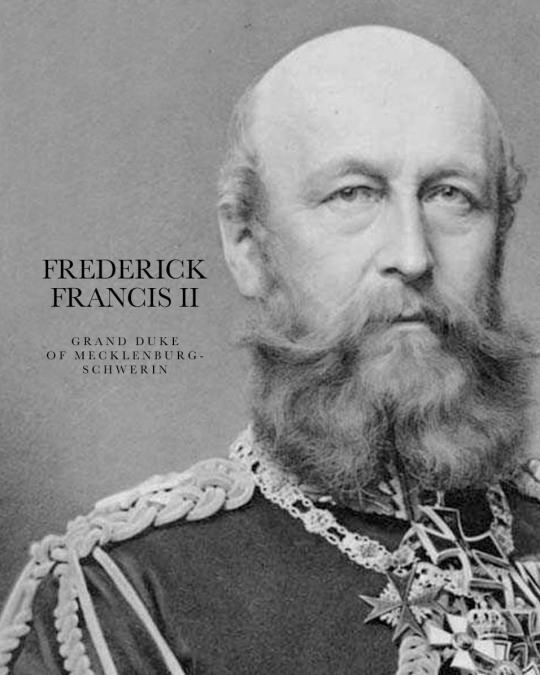
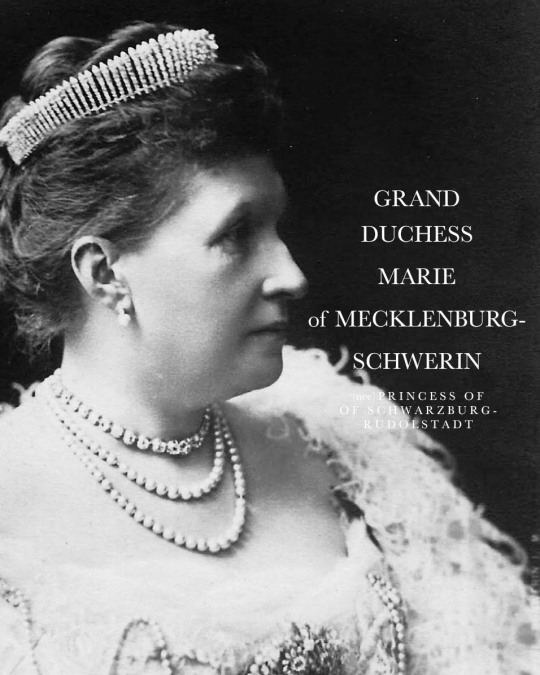
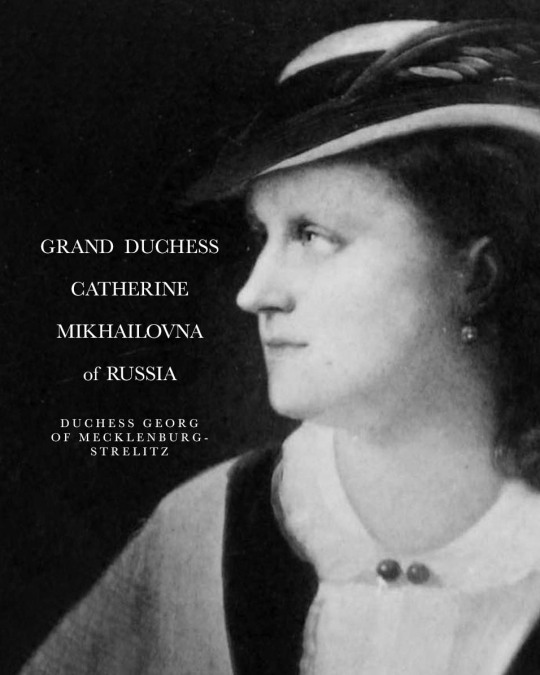
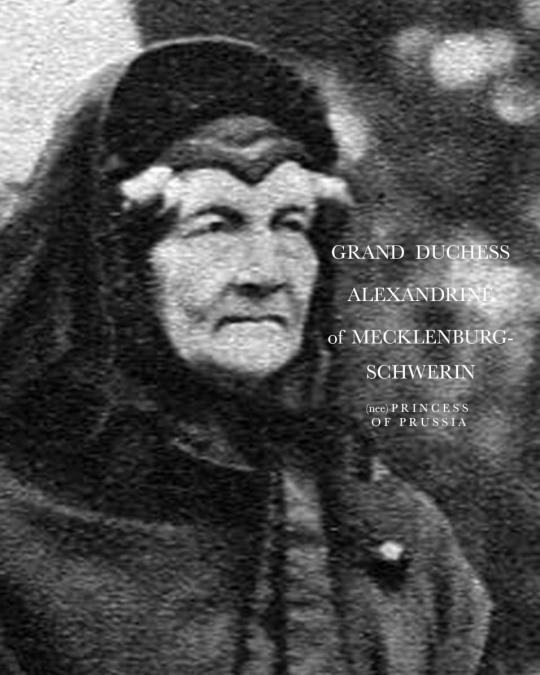
GODPARENTS OF GRAND DUCHESS ELENA VLADIMIROVNA
Grand Duchess Elena Vladimirovna, the youngest child and only daughter of Grand Duke Vladimir Alexandrovich of Russia and his German-born wife Grand Duchess Maria Pavlova (née Duchess of Mecklenburg-Schwerin), was born on 29 January (O.S. 17) 1882 in Saint Petersburg. She was christened on 12 March in the Grand Palace Church of Catherine Palace, Tsarskoe Selo. Her godparents were:
ALEXANDER III, EMPEROR OF RUSSIA - her paternal uncle, who had succeeded the Russian throne just a year prior, was named as one of her godparents. He was highly reactionary in domestic affairs and reversed some of the liberal reforms of his father, Alexander II. He was present at his niece's christening.
FREDERICK FRANCIS II, GRAND DUKE OF MECKLENBURG-SCHWERIN - her maternal grandfather was another of her godparents. A Romanov by descent (being a great-grandson of Tsar Paul), he held the rank of Prussian general and was also a Russian General Field Marshal.
MARIE, GRAND DUCHESS CONSORT OF MECKLENBURG-SCHWERIN - her step-grandmother was also named as her godparent. The third wife of Frederick Francis II, whose marriage produced four children, including Prince Hendrik, consort of Queen Wilhelmina of the Netherlands and father of Queen Juliana.
GRAND DUCHESS CATHERINE MIKHAILOVNA OF RUSSIA - A first cousin of her grandfather, Catherine was one of the two godparents present at her christening. She was the wife of Duke Georg August of Mecklenburg-Strelitz, and a great philanthropist and many of the organisations she supported and helped to create still operate today.
ALEXANDRINE, GRAND DUCHESS OF MECKLENBURG-SCHWERIN - her maternal great-grandmother, a Prussian-born princess was also her godparent. She was a sister of Empress Alexandra Feodorovna-consort of Nicholas I-who was Elena's great-grandmother on her father’s side. In 1822, she married Paul Frederick, Hereditary Grand Duke of Mecklenburg-Schwerin (himself, a grandson of Russian Tsar Paul). Their marriage was generally considered unhappy, he was a military man who had little time for or interest in his wife and family. Alexandrine, by contrast, was a devoted mother who tenderly raised her children and actively cultivated their cultural pursuits.
Source
21 notes
·
View notes
Note
who do you think olga and anastasia would've married if they had the chance to? tatiana would've married alexander of yugoslavia, since they were madly in love and maria would've married louis.
Olga wanted to 'remain Russian' so she didn't have a ton of options, but one of the Konstantinovichi boys would work. Prince Konstantin apparently asked to marry her at one point, so he might be the option with the most basis in history. Otherwise Prince Roman Petrovich or maaaaaybe Vladimir Paley if his parents' morganatic marriage wasn't held against him. I suppose if he was 'Romanov enough' to be killed in the revolution he might be 'Romanov enough' to marry a Grand Duchess.
I could see Anastasia never marrying, honestly. She might like being the quirky, independent aunt and not tied down to any husband or throne. But there was a rumor that Queen Alexandrine of Denmark (daughter of Grand Duchess Anastasia Mikhailovna), hoped that her son Frederick would marry one of the younger grand duchesses. She might be thrilled to have a daughter-in-law who had the same name as her mother, and Maria Feodorovna would love to see a granddaughter on the throne of Denmark. Frederick was very tall though so Anastasia might hate that, haha. And the rumor could be totally made up, it's from a very gossipy source.
There's some evidence that Alexander wanted to marry Tatiana, but is there anything to suggest she wanted to marry him? I've never seen anything from her end that the feelings were mutual. Rather she had her 'crushes' like Dmitri Malama and Vladimir Kiknadze. That doesn't mean she wouldn't have married Alexander--she was the most duty-conscious of the sisters and would make an excellent queen. I just don't think we can say she was in love with him.
Unpopular opinion but I don't think Maria actually would have married Louis Mountbatten. Sure, HE said he was 'determined to marry her,' but they were first cousins and first cousin marriages are not allowed in the Russian Orthodox Church, and Nicholas II didn't approve them. Nicholas' brother Misha wanted to marry their cousin Princess Beatrice of Edinburgh/Saxe-Coburg-Gotha and Nicholas refused to allow it. He was furious when Kirill married Ducky, a first cousin and divorcee. I just don't see Nicholas allowing them to marry; it was a religious thing, not just his personal opinion, and that's harder to overcome. I honestly think he'd be more likely to allow her to marry a noble or officer than a first cousin, as he DID allow that for Tatiana Konstantinovna, Irina Alexandrovna, and Olga Alexandrovna. And like with Tatiana and Alexander, I've never seen anything about Maria's feelings for Dickie. I have a hard time seeing her wanting to leave Russia--like Olga, she made it clear her dream was to marry a Russian.
30 notes
·
View notes
Photo
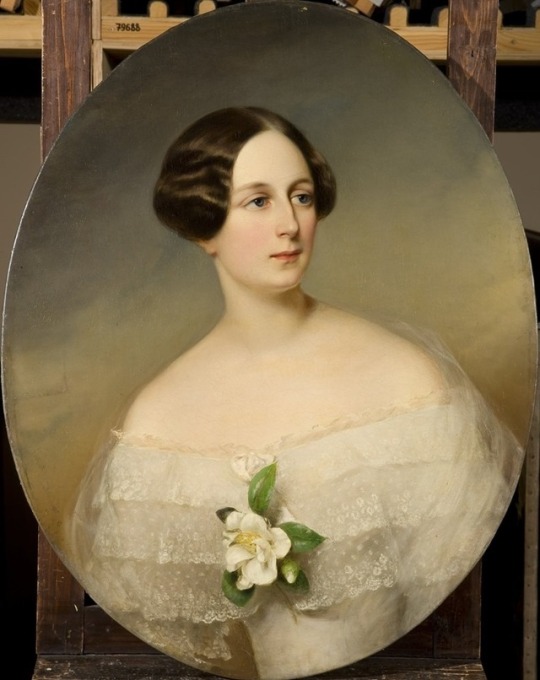
Grand Duchess Maria Mikhailovna of Russia by Schrotzberg
34 notes
·
View notes
Text
who: royal degrees of separation
The imperial, royal, princely and noble families of Europe have been intermarrying for thousands of years. This practice continues to this day, though not as frequently as in times past.
Karolina Augusta I of Mecklenburg is related to all current reigning and most non-reigning houses in Europe. Due to continual intermarriage, she is related to several families through various bloodlines. The lineage connecting her to these houses will be documented here. This is not an exhaustive list.
The closest relation is listed first, followed by any other notable shared ancestors.
REIGNING HOUSES OF EUROPE
Belgium
Karolina Augusta I and Philippe of the Belgians are fourth cousins as descendants of King Christian IX of Denmark and his wife Louise of Hesse-Kassel.
Karolina Augusta and Elisabeth, Duchess of Brabant are fourth cousins once removed.
Karolina Augusta and Philippe are also descendants of Maximilian I Joseph of Bavaria and his second wife Caroline of Baden.
Denmark
Karolina Augusta I and Margrethe II are second cousins once removed as descendants of Friedrich Franz III of Mecklenburg-Schwerin and his wife Grand Duchess Anastasia Mikhailovna of Russia.
Karolina Augusta and Crown Prince Frederik are third cousins.
Karolina Augusta and Margrethe are also descendants of Queen Victoria of the United Kingdom, and of King Christian IX of Denmark.
Liechtenstein
Karolina Augusta I and Hans-Adam II are fourth cousins twice removed as descendants of Maximilian I Joseph of Bavaria and his second wife Caroline of Baden.
Karolina Augusta and Hereditary Prince Alois are fifth cousins once removed.
Luxembourg
Karolina Augusta I and Henri of Luxembourg are fourth cousins as descendants of King Christian IX of Denmark and his wife Louise of Hesse-Kassel.
Karolina Augusta and Hereditary Grand Duke Guillaume are fourth cousins once removed.
Karolina Augusta and Henri are also descendants of Maximilian I Joseph of Bavaria and his wife Caroline of Baden.
Monaco
Karolina Augusta I and Albert II are fifth cousins as descendants of Florestan I of Monaco and his wife Maria Caroline Gibert de Lametz.
Karolina Augusta and Hereditary Prince Jacques are fifth cousins once removed.
The Netherlands
Karolina Augusta I and Willem-Alexander are third cousins once removed as descendants of Friedrich Franz II of Mecklenburg-Schwerin and his third wife Marie of Schwarzburg-Rudolstadt.
Karolina Augusta and Catharina-Amalia, Princess of Orange, are fourth cousins.
Karolina Augusta and Willem-Alexander are also descendants of George Victor, Prince of Waldeck and Pyrmont and his first wife Princess Helene of Nassau.
Norway
Karolina Augusta I and Harald V of Norway are third cousins once removed as descendants of King Christian IX of Denmark and his wife Louise of Hesse-Kassel.
Karolina August and Crown Prince Haakon are fourth cousins.
Karolina Augusta and Harald are also descendants of Queen Victoria of the United Kingdom and her husband Albert of Saxe-Coburg and Gotha.
Spain
Karolina Augusta I and Felipe VI of Spain are third cousins as descendants of Ernst August, Crown Prince of Hanover and his wife Thyra of Denmark.
Karolina Augusta and Leonor, Princess of Asturias are third cousins once removed.
Karolina Augusta and Felipe are also descendants of Queen Victoria of the United Kingdom and her husband Albert of Saxe-Coburg and Gotha.
Sweden
Karolina Augusta I and Carl XVI Gustaf of Sweden are third cousins twice removed as descendants of Queen Victoria of the United Kingdom and her husband Albert of Saxe-Coburg and Gotha.
Karolina Augusta and Crown Princess Victoria are fourth cousins once removed.
Karolina Augusta and Carl XVI Gustaf are also descendants of George Victor, Prince of Waldeck and Pyrmont and his first wife Princess Helene of Nassau.
The United Kingdom
Karolina Augusta I and Elizabeth II of the United Kingdom are third cousins once removed as descendants of King Christian IX of Denmark and his wife Louise of Hesse-Kassel.
Karolina Augusta I and Prince Philip, Duke of Edinburgh are second cousins twice removed as descendants of King Christian IX of Denmark and his wife Louise of Hesse-Kassel.
Karolina Augusta I and Charles, Prince of Wales are third cousins once removed through his father’s descent of King Christian IX of Denmark and his wife Louise of Hesse-Kassel.
Karolina Augusta is fourth cousins to the grandchildren of Prince Philip, Duke of Edinburgh.
Karolina Augusta and Elizabeth, and her husband, are also descendants of Queen Victoria of the United Kingdom and her husband Albert of Saxe-Coburg and Gotha.

NON-REIGNING HOUSES OF EUROPE
Austria-Hungary
Karolina Augusta I and Karl von Habsburg are fourth cousins once removed as descendants of King John of Saxony and his wife Amalie Auguste of Bavaria.
Karolina Augusta and Ferdinand Zvonimir are fifth cousins.
Karolina Augusta and Karl are also descendants of Ernst I, Prince of Hohenlohe-Langenburg and his wife Princess Feodora of Leiningen.
Baden (German Empire)
Karolina Augusta I and Max, Margrave of Baden second cousins once removed as descendants of Ernst August, Crown Prince of Hanover and his wife Thyra of Denmark.
Karolina Augusta I and Hereditary Prince Bernhard are third cousins.
Karolina Augusta I and Max are also descendants of Queen Victoria of the United Kingdom and her husband Albert of Saxe-Coburg and Gotha.
Bulgaria
Karolina Augusta I and Simeon II of Bulgaria are fourth cousins once removed as descendants of King John of Saxony and his wife Amalie Auguste of Bavaria.
Karolina Augusta and Boris, Prince of Turnovo are fifth cousins once removed.
Karolina Augusta and Simeon are also descendants of Francis, Duke of Saxe-Coburg-Saalfeld and his second wife Countess Augusta Reuss of Ebersdorf.
Greece
Karolina Augusta I and Constantine II of Greece are second cousins once removed as descendants of Ernst August, Crown Prince of Hanover and his wife Thyra of Denmark.
Karolina Augusta and Crown Prince Pavlos are third cousins.
Karolina Augusta and Constantine are also descendants of King Christian IX of Denmark, and of Queen Victoria of the United Kingdom.
Karolina Augusta and Crown Prince Pavlos are also descendants of Friedrich Franz III of Mecklenburg-Schwerin and his wife Grand Duchess Anastasia Mikhailovna of Russia.
Hannover (German Empire)
Karolina Augusta I and Ernst August V, Prince of Hannover are second cousins once removed as descendants of Ernst August, Crown Prince of Hannover and his wife Princess Thyra of Denmark.
Karolina Augusta and Ernst August, Hereditary Prince of Hannover are third cousins.
Karolina Augusta and Ernst August are also descendants of Queen Victoria of the United Kingdom and her husband Albert of Saxe-Coburg and Gotha.
Hesse (German Empire)
Karolina Augusta I and Donatus, Landgrave of Hesse are fourth cousins once removed as descendants of Queen Victoria of the United Kingdom and her husband Albert of Saxe-Coburg and Gotha.
Karolina Augusta I and Moritz, Hereditary Prince of Hesse are fifth cousins.
Hohenlohe-Langenburg (German Empire)
Karolina Augusta I and Philipp, Prince of Hohenlohe-Langenburg are third cousins once removed as descendants of Alfred, Duke of Saxe-Coburg and Gotha and his wife Grand Duchess Maria Alexandrovna of Russia.
Karolina Augusta and Hereditary Prince Max Leopold are fourth cousins.
Hohenzollern (German Empire)
Karolina Augusta I and Karl Friedrich, Prince of Hohenzollern are first cousins once removed as descendants of Karl, 6th Prince of Leiningen and his wife Grand Duchess Maria Kirillovna of Russia.
Karolina Augusta and Hereditary Prince Alexander are second cousins.
Leiningen (German Empire)
Karolina Augusta I is a niece of Andreas, 8th Prince of Leiningen.
Karolina Augusta I and Hereditary Prince Ferdinand are first cousins.
Mecklenburg-Strelitz (German Empire)
Karolina Augusta I and Borwin, Duke of Mecklenburg-Strelitz are fourth cousins once removed as descendants of John of Saxony and his wife Princess Amalia of Bavaria.
Karolina Augusta I and Hereditary Duke Alexander are fifth cousins.
Karolina Augusta I and Borwin, Duke of Mecklenburg-Strelitz’s most recent patrilineal ancestor is Adolf Friedrich I, Duke of Mecklenburg, who died in 1658.
Oldenburg (German Empire)
Karolina Augusta I and Christian, Duke of Oldenburg are first cousins once removed as descendants of Nikolaus, Hereditary Duke of Oldenburg and his wife Helen of Waldeck and Pyrmont.
Karolina Augusta I and Hereditary Duke Alexander are second cousins.
Portugal
Karolina Augusta I and Duarte Pio, Duke of Braganza are fourth cousins twice removed as descendants of Karl Ludwig, Prince of Hohenlohe-Langenburg and his wife Countess Amalie Henriette of Solms-Baruth.
Karolina Augusta and Afonso, Prince of Beira are fifth cousins once removed.
Prussia (German Empire)
Karolina Augusta I and Georg Friedrich, Prince of Prussia are second cousins once removed as descendants of Kirill Vladimirovich, Grand Duke of Russia and his wife Princess Victoria Melita of Saxe-Coburg and Gotha.
Karolina Augusta and Prince Carl Friedrich are third cousins.
Karolina Augusta and Georg Friedrich are also descendants of Friedrich Franz III, Grand Duke of Mecklenburg-Schwerin and his wife Grand Duchess Anastasia Mikhailovna of Russia.
Romania
Karolina Augusta I and King Michael I of Romania are second cousins twice removed as descendants of Alfred, Duke of Saxe-Coburg and Gotha and his wife Grand Duchess Maria Alexandrovna of Russia.
Karolina Augusta and Crown Princess Margareta are third cousins once removed.
Karolina Augusta and Michael are also descendants of King Christian IX of Denmark and his wife Louise of Hesse-Kassel.
Russia (Disputed)
Karolina Augusta I and Maria Vladimirovna are first cousins twice removed as descendants of Kirill Vladimirovich, Grand Duke of Russia and his wife Princess Victoria Melita of Saxe-Coburg and Gotha.
Karolina Augusta and Grand Duke George Mikhailovich are second cousins once removed.
Saxe-Coburg and Gotha (German Empire)
Karolina Augusta I and Andreas, Prince of Saxe-Coburg and Gotha are third cousins twice removed descendants of Queen Victoria of the United Kingdom and her husband Albert of Saxe-Coburg and Gotha.
Karolina Augusta and Hubertus, Hereditary Prince of Saxe-Coburg and Gotha are fourth cousins once removed.
Schleswig-Holstein (German Empire)
Karolina Augusta I and Christoph, Prince of Schleswig-Holstein are second cousins once removed as descendants of Friedrich August II, Grand Duke of Oldenburg and his second wife Duchess Elisabeth Alexandrine of Mecklenburg-Schwerin.
Karolina Augusta and Hereditary Prince Friedrich Ferdinand are third cousins.
Karolina Augusta and Christoph are also descendants of Alfred, Duke of Saxe-Coburg and Gotha and his wife Grand Duchess Maria Alexandrovna of Russia.
Waldeck and Pyrmont (German Empire)
Karolina Augusta I and Wittekind, Prince of Waldeck and Pyrmont are first cousins twice removed as descendants of Friedrich August II, Grand Duke of Oldenburg and his second wife Duchess Elisabeth Alexandrine of Mecklenburg-Schwerin.
Karolina Augusta and Hereditary Prince Carl-Anton are second cousins once removed.
Wied (German Empire)
Karolina Augusta I and Maximilian, 9th Prince of Wied are third cousins as descendants of Friedrich August II, Grand Duke of Oldenburg and his second wife Duchess Elisabeth Alexandrine of Mecklenburg-Schwerin.
Yugoslavia/Serbia
Karolina Augusta I and Alexander, Crown Prince of Yugoslavia are third cousins once removed as descendants of Alfred, Duke of Saxe-Coburg and Gotha and his wife Grand Duchess Maria Alexandrovna of Russia.
Karolina August and Hereditary Prince Peter are fourth cousins.
0 notes
Note
Omg, and all this time I thought there was just the one fringe tiara and fringe necklace in the BRF.... Are fringe tiaras particularly common amongst royal or aristo families?
Fringes are a common type of tiara and the British Royal Family has more than any other current royal family. Of course the Russians had way more back in the day because the style originates from Russia and nearly every woman in the imperial family had one. The first fringe was supposedly made for Empress Alexandra Feodorovna (Charlotte of Prussia not Alix of Hesse) but I don’t know how accurate that is. Here she is wearing it as a necklace in 1826 for her coronation portrait.
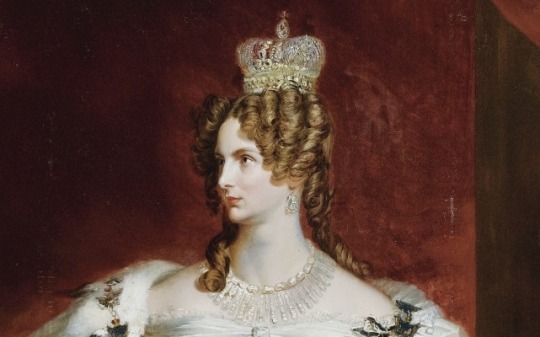
And now for a feast of Russian fringes...
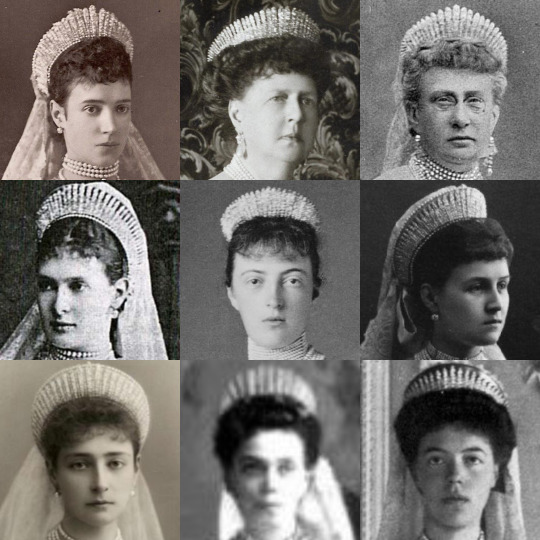
Top row: Maria Feodorovna, Maria Alexandrovna, Vera Konstantinovna
Middle row: Maria Pavlovna, Anastasia Mikhailovna, Alexandra Georgievna
Bottom row: Alexandra Feodorovna, Xenia Alexandrovna, Olga Alexandrovna
They often wore them attached to a fabric kokoshnik. You can see all of the fringe tiaras I’ve covered here.
#Tiara Talk#fringe tiara#tiara#Russian Imperial Family#British Royal Family#United Kingdom#Russia#Empress Maria Feodorovna#Grand Duchess Maria Alexandrovna#Grand Duchess Vera Konstantinova#Grand Duchess Maria Pavlovna#Grand Duchess Anastasia Mikhailovna#Grand Duchess Alexandra Georgievna#Empress Alexandra Feodorovna#Grand Duchess Xenia Alexandrovna#Grand Duchess Olga Alexandrovna#100
160 notes
·
View notes
Text

Grand Duchesses Ekaterina, Elizaveta, and Maria Mikhailovna of Russia by Hau.
#grand duchess maria mikhailovna#grand duchess elizaveta mikhailovna#grand duchess ekaterina mikhailovna#romanov#russia#vladimir ivanovich hau#portrait
37 notes
·
View notes
Text

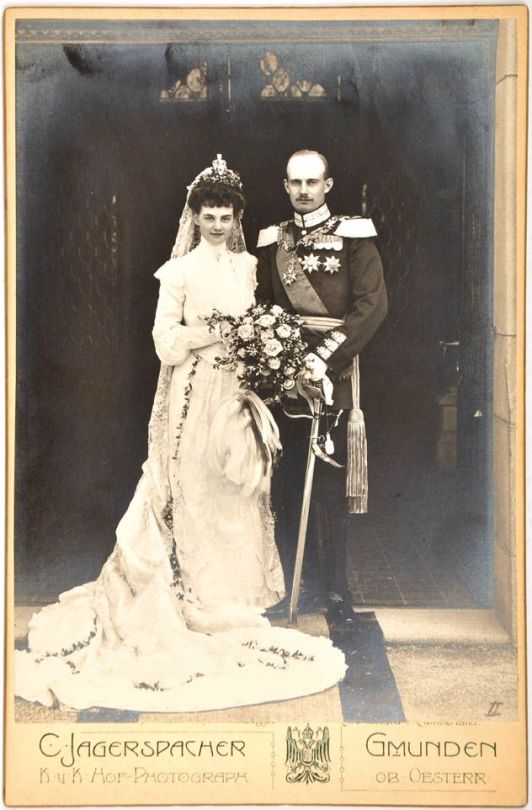
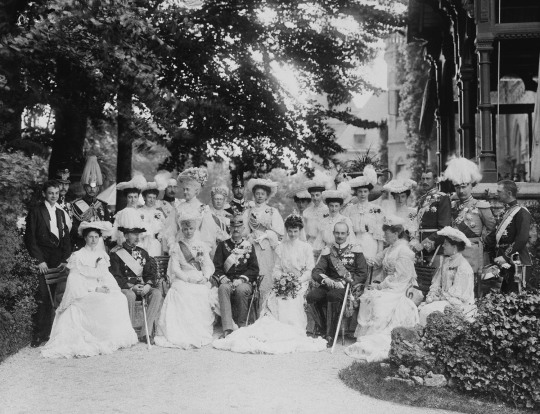
Photograph taken on the day of the wedding of Grand Duke Frederick Francis IV of Mecklenburg-Schwerin and Princess Alexandra of Cumberland, Gmunden, June 7th 1904, with other members of Royal Families of Europe. June 7th, 1904.
Middle row: Prince Ernest Augustus of Hanover, Hereditary Prince George William of Hanover, Prince Frederick of Schaumburg-Lippe, Princess Marie Louise of Baden née Hanover and Cumberland, Princess Charlotte Reuss of Köstritz née Mecklenburg-Schwerin, Prince Maximilian of Baden, Princess Frederica of Hanover (Baroness von Pawel-Rammingen), Duchess Vera of Württemberg née Grand Duchess Vera Konstantinovna, Duke John Albert of Mecklenburg-Schwerin, Duchess Elisabeth Sybille of Mecklenburg-Schwerin née Princess of Saxe-Weimar-Eisenach, unknown Princess, Princess Olga of Hanover and Cumberland, Princess Thyra of Denmark, Duchess Cecilie of Mecklenburg-Schwerin, Crown Princess Alexandrine of Denmark née Mecklenburg-Schwerin, Crown Prince Christian of Denmark.
Front row: Princess Louise of Schaumburg-Lippe née Denmark, King Christian IX of Denmark, Crown Princess Thyra of Hanover née Denmark, Crown Prince Ernest Augustus of Hanover, Grand Duchess Alexandra of Mecklenburg-Schwerin née Princess of Hanover and Cumberland, Grand Duke Friedrich Franz IV of Mecklenburg-Schwerin, Dowager Grand Duchess Anastasia Mikhailovna of Mecklenburg-Schwerin, Grand Duchess Maria Pavlovna The Elder.
Source: pinterest and Royal Collection
#Grand duchess alexandra of Mecklenburg-Schwerin#grand duke frederick francis iv of Mecklenburg-Schwerin#grand duchess anastasia mikhailovna#grand duchess maria pavlovna#king Christian ix of Denmark#crown princess cecilie of prussia#queen alexandrine of denmark#King Christian x of Denmark#crown Prince ernest augustus of hanover#crown princess thyra of hanover#Prince maximilian of baden#princess marie louise of hanover#princess louise of denmark#Prince Frederick of Schaumburg-Lippe#Princess frederica of hanover#duke john albert of mecklenburg-schwerin#mecklenburg-schwerin#princes thyra of Denmark#princess Olga of hanover#princess Alexandra of hanover#Prince ernest augustus of hanover#hanover and cumberland#brunswick#royal weddings
43 notes
·
View notes
Text
More from 1911 -
1911 Euphimia Nosova by Konstantin Somov (State Tretyakov Gallery - Moskva, Russia). From Wikimedia 2075X3293. This is the epitome of Edwardian dress.

Queen Alexandra's daughters
Left 1911 Duchess of Fife, Princesses Alexandra and Maude. From the lost gallery's photostream on flickr 5384X3684 @800 4.1Mj.
Right 1911 HH Princess Maud and HRH Princess Royal Louise. From eBay reduced contrast and removed mono-color tint 957X1522.
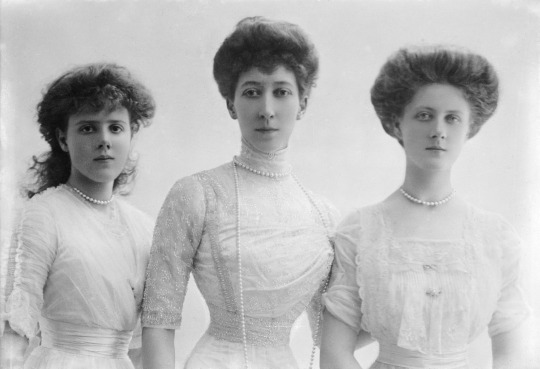

1911 Evening dress of Queen Alexandra (Fashion Museum - Bath, Somerset, UK). From tumblr.com/fashionsfromthepast 1280X1812.
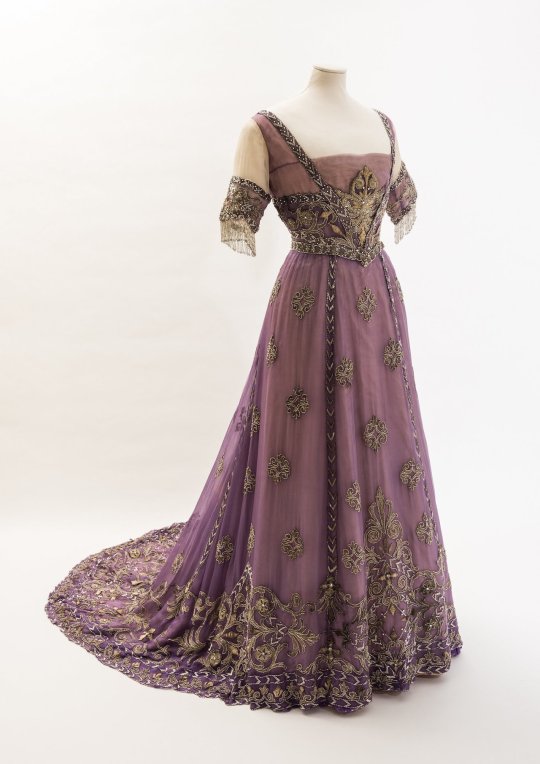
1911 Geneviève Vix, a singer by Jean Coraboeuf (Musée des Beaux-Arts de Nantes - Nantes, Loire-Atlantique, Pays de la Loire, France). From history-of-fashion.tumblr.com/image/177126241755 643X975.

1911 Hélène d'Orléans, duchesse d'Aosta by ?. From tumblr.com/blog/view/jeannepompadour/683841884513288192; fixed a few spots w Pshop 1450X2000.
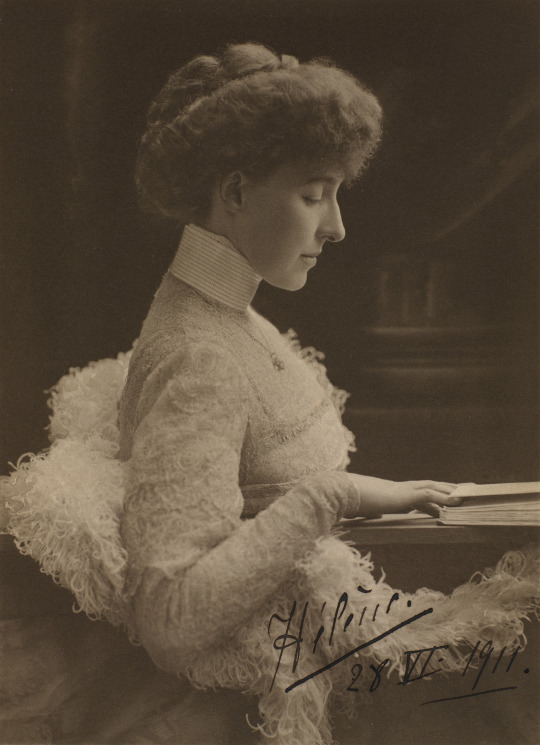
1911 Frau Luther by Lovis Corinth (Landesmuseum Hannover - Hanover, Niedersachsen, Germany). From cutlermiles.com/portrait-of-frau-luther-lovis-corinth/ 966X1280.
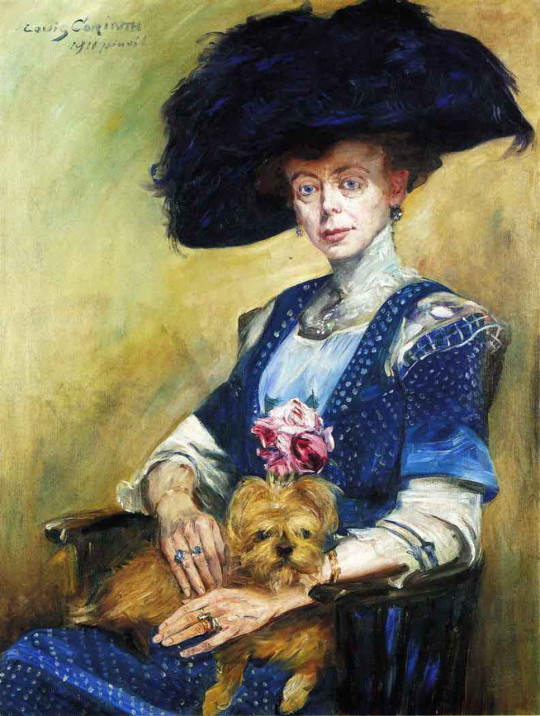
1911 Lady in Lavender by Lawton S. Parker (private collection). From the discontinued Athenaeum Web site 716X955.

Left Maria Josefa of Austria with Karl. Posted to Foro Dinastias by Katyusha on 25 May 2010 614X800
Right ca. 1911 (based on age of child) Grand Duchess-Mother Anastasia Mikhailovna of Mecklenburg-Schwerin with her grandson Friedrich. From eBay; removed mono-color tint 891X1433.

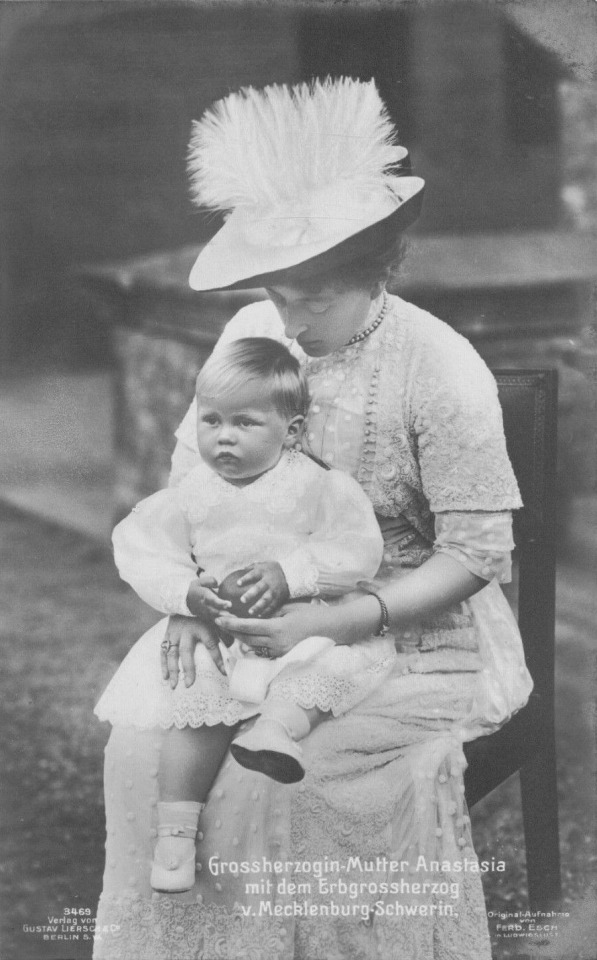
1911 Dolors Vidal by Ramon Casas (Museu Nacional d'Art de Catalunya - Barcelona, Catalunya, Spain). From artsandculture.google.com; fixed obvious flaws w Pashop 1332X2652 @144 4.9Mp.

1911 (1 August issue) Le Theatre Mlle Lantelme. From verbinina.wordpress.com/2012/12/05/le-theatre-303/le-theatre-303-1-aout-1911-vkl/; fixed spots w Pshop 1182X1616

#1910s fashion#1911 fashion#Bellle Époque fashion#Edwardian fashion#Euphimia Nosova#Konstantin Somov#Princess Royal Louise#Princess Alexandra - 2nd Duchess of Fife#Maud Carnegie - Countess of Southesk#Queen Alexandra#Geneviève Vix#Jean Coraboeuf#Hélène d'Orléans#Frau Luther#Lovis Corinth#Lawton S. Parker#Maria Josefa of Austria#Anastasia Mikhailovna of Mecklenburg-Schwerin#Dolors Vidal#Ramon Casas#Genviève Lantelme
6 notes
·
View notes
Photo
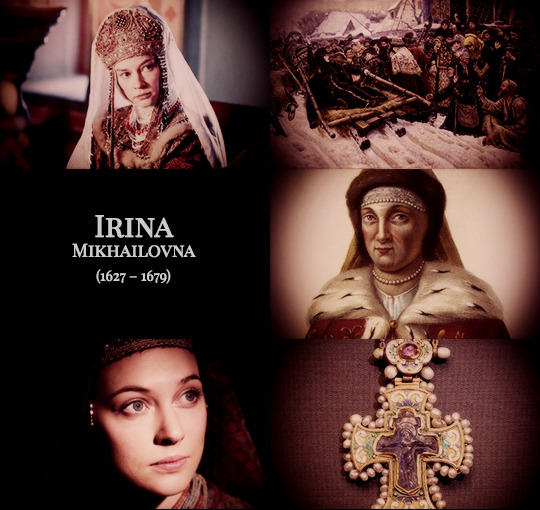



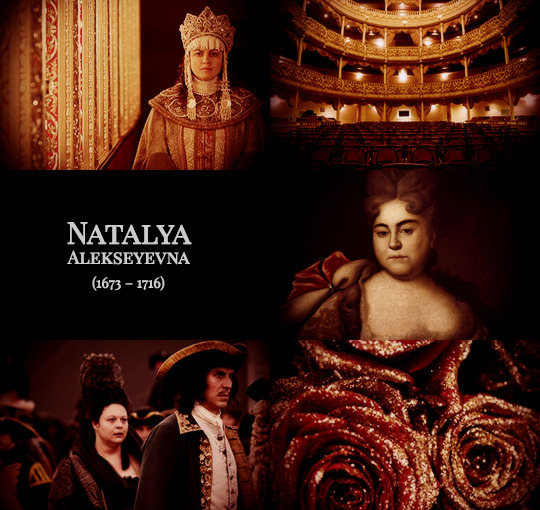
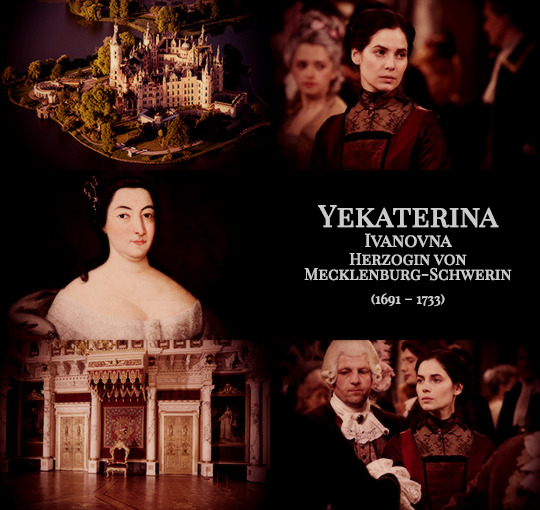



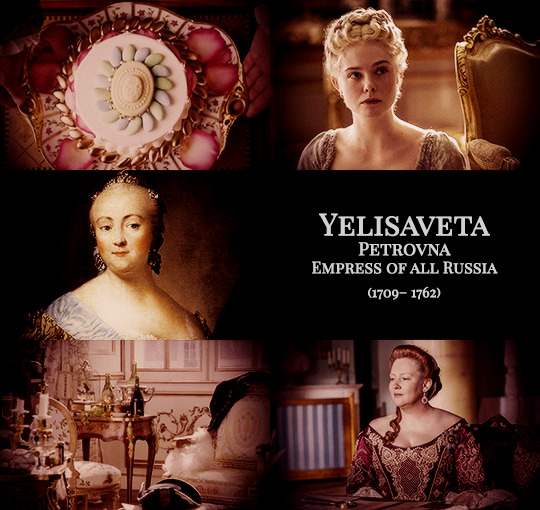
Women of the House of Romanov, part I
Tsarevna Irina Mikhailovna. Daughter of Tsar Mikhail I and Yevdokiya Lukyanovna Streshnyova.
Tsarevna Tatyana Mikhailovna. Daughter of Tsar Mikhail I and Yevdokiya Lukyanovna Streshnyova.
Tsarevna Marfa Alekseyevna. Daughter of Tsar Aleksey and Maria Ilyinichna Miloslavskaya.
Tsarevna Sofiya Alekseyevna. Daughter of Tsar Aleksey and Maria Ilyinichna Miloslavskaya.
Tsarevna Natalya Alekseyevna. Daughter of Tsar Aleksey and Natalya Kirillovna Naryshkina.
Tsarevna Yekaterina Ivanovna. Daughter of Tsar Ivan V and Praskovia Fyodorovna Saltykova.
Tsarevna Anna Ivanovna. Daughter of Tsar Ivan V and Praskovia Fyodorovna Saltykova. Mother of Grand Duchess Anna Leopoldovna.
Tsarevna Praskovya Ivanovna. Daughter of Tsar Ivan V and Praskovia Fyodorovna Saltykova.
Grand Duchess Anna Petrovna. Daughter of Tsar Pyotr I and Marta Helena Skowrońska.
Grand Duchess Yelisaveta Petrovna. Daughter of Tsar Pyotr I and Marta Helena Skowrońska.
#historyedit#house of romanov#russian history#european history#women's history#history#royalty aesthetic#nanshe's graphics
141 notes
·
View notes
Text
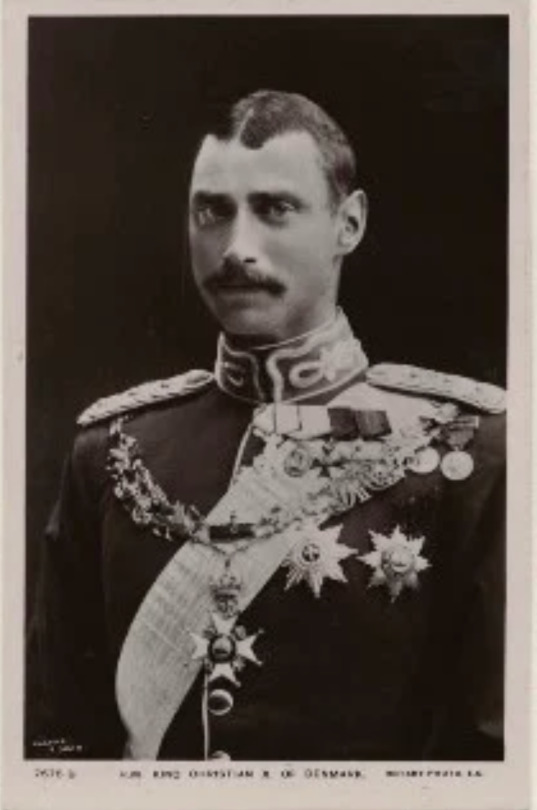
King Christian X (Christian Carl Frederik Albert Alexander Vilhelm; 1870 – 1947); King of Denmark from 1912 to his death in 1947
I want to place this remarkable individual within the context of the many royal families we discuss in this blog. He had quite an eventful and successful reign, including transitioning his country into a constitutional monarchy, but this post is just about (some) of his relatives.
He was a grandson of Christian IX and the son of the future Frederick VIII. His brother was the future Hakoon VII of Norway. His paternal aunts were Dagmar (Empress Maria Feodorovna) and Queen Alexandra of the United Kingdom. King George V, Queen Maud, and Tsar Nicholas II were his first cousins. Christian X's mother was Lovisa of Sweden.
He was raised strictly in a palace part of the Amelienborg Palace complex. He received a military education and studied at the Officers Academy.
Christian initially loved Princess Marguerite of Orleans, but his feelings were not returned, so he married Princess Alexandrine of Mecklenburg Schwerin. Alexandrine's maternal line was Romanov...her mother, Anastasia, was the daughter of Nicholas I's younger son, Grand Duke Mikhail Nikolaievich. They had two sons: Prince Frederick (1899–1972), later King Frederick IX of Denmark and Prince Knud (1900–1976)
In case you are wondering, he was 6 feet 7 inches tall.
What a dynasty Christian IX and Queen Louise gave to the world!
#European history#Christian IX#Christian X#Louise of Hesse-Kessel#Grand Duchess Anastasia Mikhailovna#Frederick VIII#Empress Maria Feodorovna#Queen Alexandra of the United Kingdom#George V#Nicholas II#King Hakoon VII#Queen Maud#Lovisa of Sweeden#Alexandrine of Mecklenburg Schwerin
13 notes
·
View notes